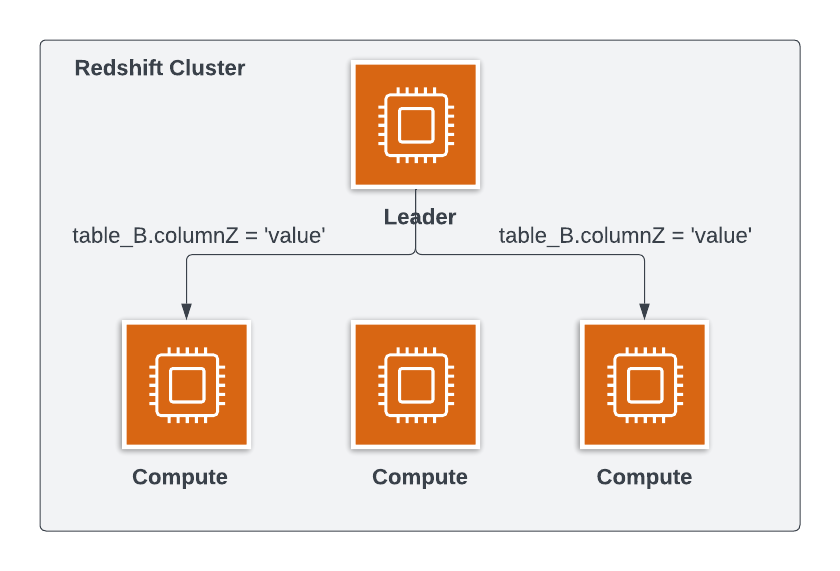Writing optimal queries
Introduction to Redshift

Jason Myers
Principal Engineer
Limit columns
- Avoid
SELECT * - Don't select columns you don't need in the result
- Remember that Redshift is columnar and pulls data by column
Use DISTKEY and SORTKEYs
Use in the following clauses whenever possible
JOINWHEREGROUP BY
Use SORTKEYs in order in ORDER BY
- Highly optimized
sortkey_1, sortkey_2, sortkey_3 - Not optimized
sort_key_1, sort_key_3

Building good predicates
- Use
DISTKEYandSORTKEY - Close to the table join
- Avoid using functions in them
SELECT receipts.cookie_id,
sum(receipts.total)
FROM receipts
JOIN cookies ON receipts.cookie_id = cookies.cookie_id
-- Keep cookies predicates in the join to push down to nodes holding the records for cookies
AND cookies.available_on < '2023-11-14'
AND cookies.end_of_sale IS null
-- Predicates that are not part of the join or on the joined table stay in the WHERE clause
WHERE receipts.order_time > '2023-11-13'
GROUP BY 1 ORDER BY 1;
Be consistent with column ordering
When using:
GROUP BYORDER BY
Bad
GROUP BY col_one, col_two, col_three
ORDER BY col_two, col_three, col_one
Good
GROUP BY col_two, col_three, col_one
ORDER BY col_two, col_three, col_one
Use subqueries wisely
- Use proper join strategies instead of just using a subquery
- Use
EXISTSin your predicates when just checking for the truthfulness of a subquery resultSELECT column_name FROM table_name WHERE EXISTS (SELECT column_name FROM table_name WHERE active is True); - If reusing subqueries, use CTEs to take advantage of caching
Let's practice!
Introduction to Redshift

